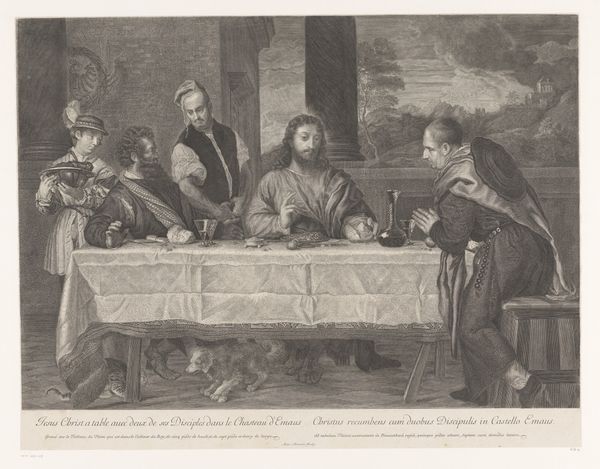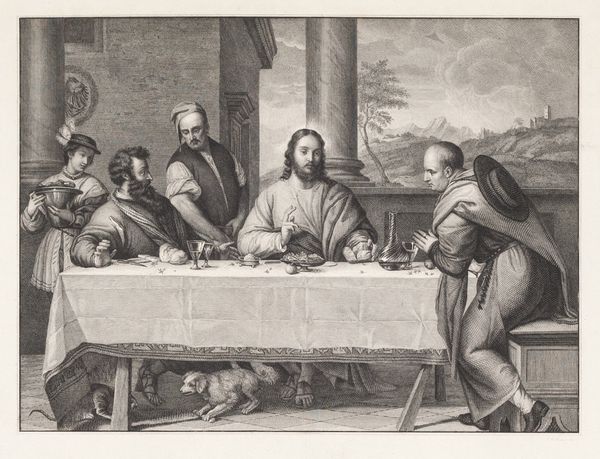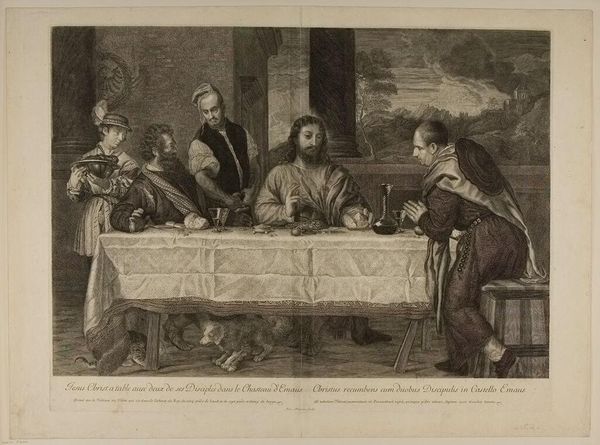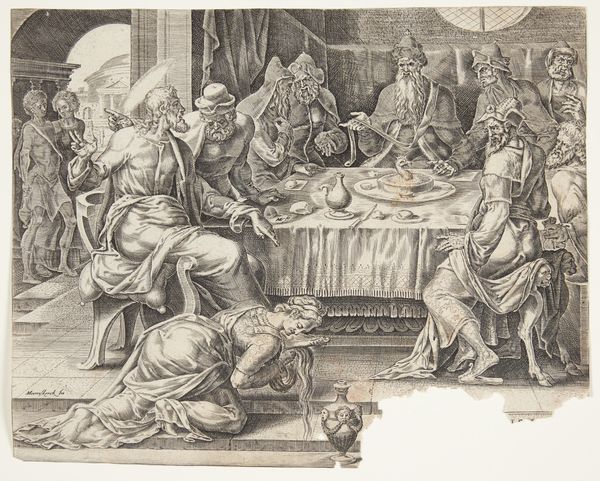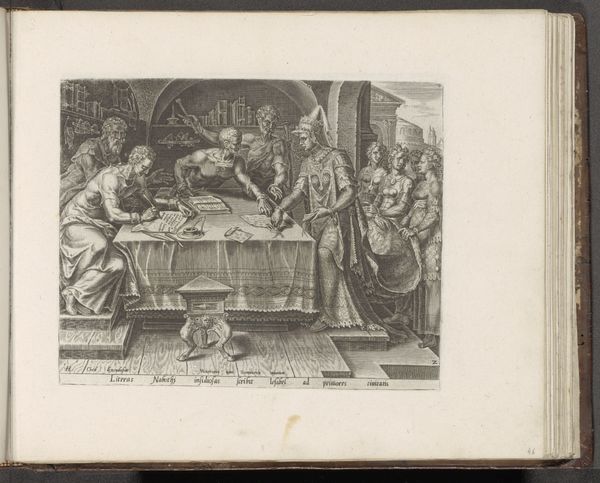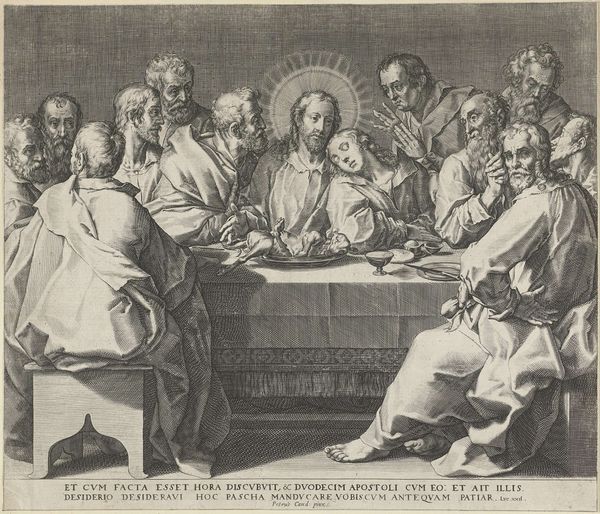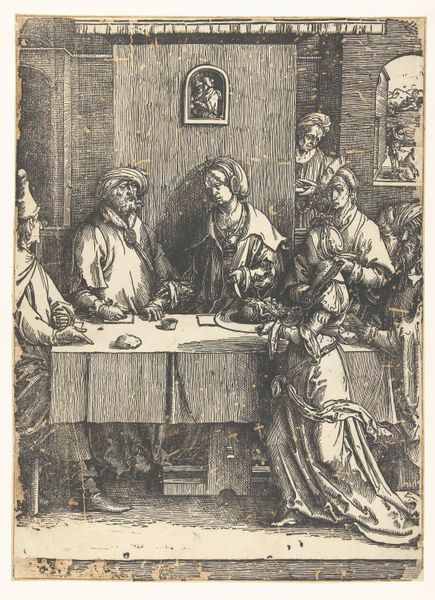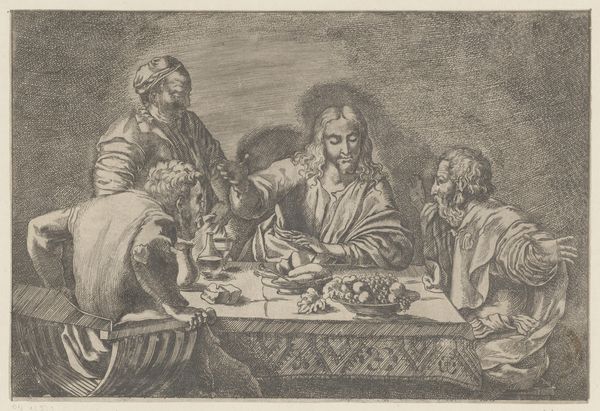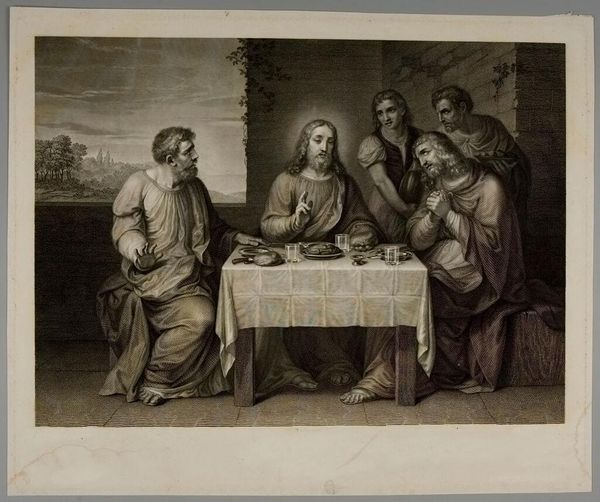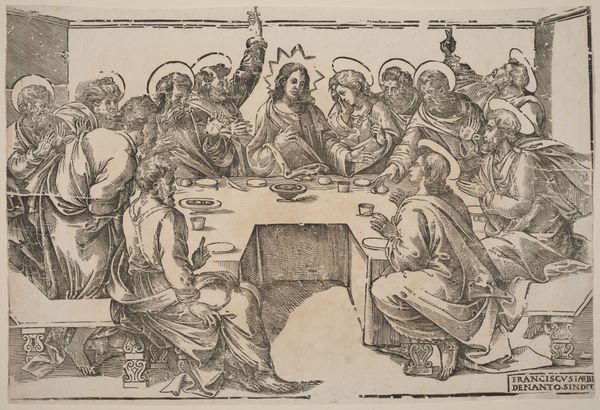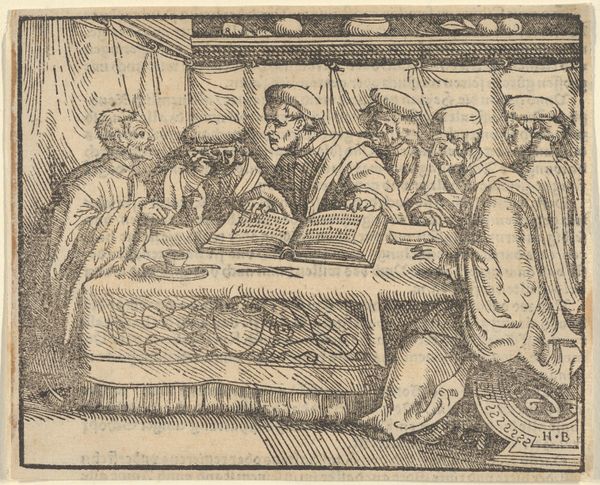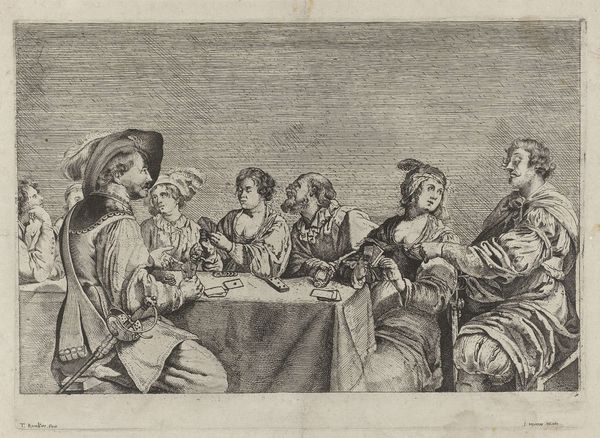
print, engraving
#
narrative-art
#
baroque
# print
#
old engraving style
#
figuration
#
history-painting
#
engraving
Dimensions: height 302 mm, width 397 mm
Copyright: Rijks Museum: Open Domain
Editor: Here we have François Chauveau’s engraving, "Maaltijd in Emmaüs," from around 1656, currently residing in the Rijksmuseum. The print’s intricate lines and the subject matter—a biblical meal—create quite a solemn mood. What stands out to you about it? Curator: What strikes me is the labor invested in producing such an intricate print. Consider the engraver's skill, the hours spent meticulously carving the metal plate. The paper itself, a manufactured material, represents an entire economy. How do you think this production method, specifically the act of engraving, influenced the image and its reception? Editor: That’s fascinating; I hadn't thought about the labor involved. I guess the reproduction element means it could reach a wider audience, potentially altering the message? Curator: Precisely! The reproducibility democratizes the image, disseminating a narrative to potentially countless viewers, and each impression bears witness to that production. Consider the social context: was this a devotional image for personal contemplation, or was it meant for broader public consumption, perhaps even political messaging? Editor: So, looking at the material, like the ink and paper, and thinking about who would have bought it tells us a lot about its purpose. It blurs the line between religious art and something more functional? Curator: Indeed. By focusing on the materials and mode of production, we shift our understanding. The narrative depicted becomes secondary to the economic and social forces that enabled its creation and dissemination. Editor: I never thought I could interpret an artwork focusing so much on the "how" rather than the "what". Curator: Exactly, considering production value gives us new perspective.
Comments
No comments
Be the first to comment and join the conversation on the ultimate creative platform.
